Football was played in and around the Waratah district not quite continuously from the 1880s until 1953. However, organising a competitive competition was a challenging enterprise. At any time, the local competition only had three teams and played under different rules, the main one allowing less than 18 players per side. There could have been more teams at various times, but because there was only one oval at Waratah, two clubs played each Saturday during the football season, and the other had a bye. The change shed was at the southern end of the ground, with a simple partition separating the two teams.
The success of the competition was closely aligned with the fortunes of mining. Over the years, teams that competed in the WDFA were Bischoff, Wanderers, Waratah, Magnet, Pioneers, Rovers, Union, Miners, City and Parrawe Rovers. Colours and jumper designs varied for each club over the years.
The Mount Bischoff Football Club formed at Waratah in May 1884 and were known as the “Tinlanders”. Mr C H Hall was the foundation president. The only other football teams before them on the north-west coast were Latrobe and Formby on the Mersey River. Over the next 13 years, they played up to seven intra-club games a year against other teams on the West Coast, travelling by train to the coast or hosting teams at Waratah.
In subsequent years, several “influential persons” were elected vice presidents of the Bischoff Football Club, including the Chief Agent of the Van Diemen’s Land Company, James Norton Smith.
In 1887, a second Waratah football team was formed called Wanderers. They played their first game on Good Friday, where Bischoff won a tightly contested game in front of over 1,000 spectators. In October of that year, they played their last match against each other. During the first half, some Wanderers players disputed a decision by the umpire, and the game quickly became a “display of boxing”. After a long “wrangle”, play resumed, but not before one player broke his arm.
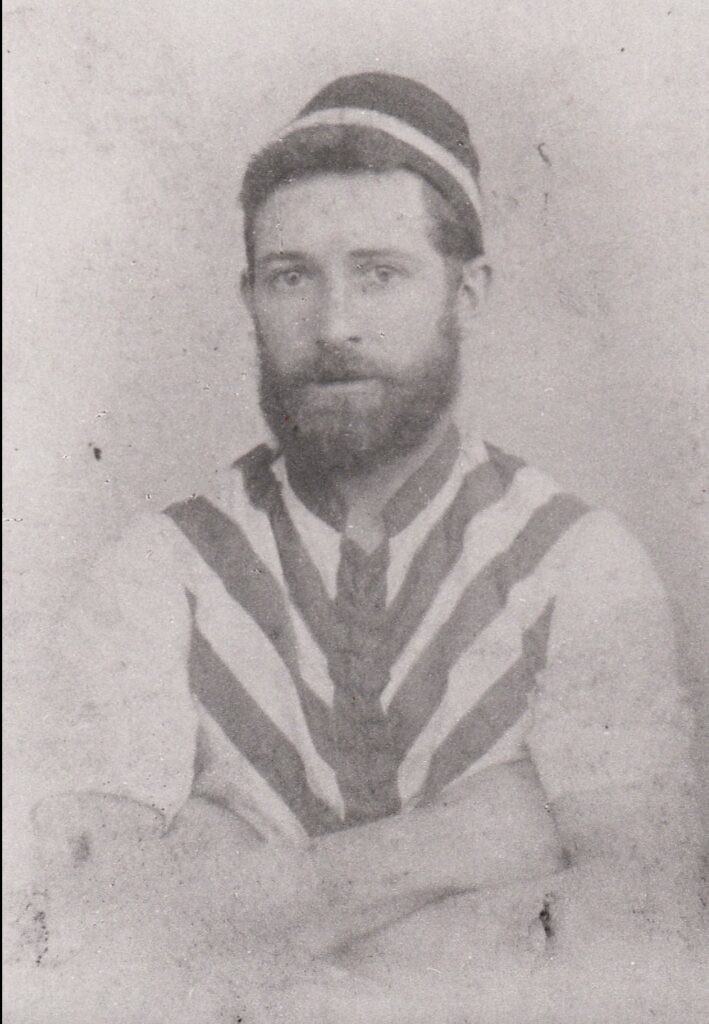
Towards the end of that season, 20 players from the Bischoff club went on a trip along the Circular Head coast to play games against Stanley, Forest, and Wynyard. After the train trip to Emu Bay, they sailed to Stanley, arriving at 10:30 pm and were welcomed by the locals “over a glass of nectar at Mrs McKay’s”. The next day, they played the local team at the Highfields paddock on local identity Mr Ford’s property. The greasy state of the turf “militated against a good exposition of the game and greatly favoured the prostrate position”.
The “first sixteens” of the Bischoff and Wanderers played a draw in June 1892, with the match reporter stating that he was “glad to be able to record that there were no fisticuff exhibitions”.
In 1893, locals formed a third team called Waratah to create a three-team competition.
The season’s second match between Bischoff and Wanderers ended with an unseemly brawl. The local correspondent described football in Waratah as “debased by a number of players, who finding no other outlet for their superabundance of animal spirits outside the pale of the law, take up the game and reduce it to a contest of brute strength and fisticuffs”.
Each club had to play five games, and four points were awarded for each win. Mr Sullivan donated a silver cup for the premier club of the season with the most points. The publican of the Bischoff Hotel, Mr R Lowe, also presented a No 2 Gilbert match football to the premier club, which was Bischoff.
In May 1899, a meeting was held to form a new football association of three teams – Waratah, Magnet and Bischoff, called the Waratah District Football Association (WDFA). Edward Lynch was the first President. They played under the North West Tasmania Junior Association rules, which allowed up to 14 players per side. Before the formation of the WDFA, Bischoff were premiers each year and continued their winning success, retaining premiership for the first five years of the WDFA (see table at end of story for the list of teams each year and all premiers, where known).
The Waratah club became known as Pioneer in 1904 and were premiers in their first year, beating Bischoff in the final by 14 points – the first time Bischoff were not premiers. Later that year, combined teams from Burnie (named Emu Bay) and Waratah played at Emu Bay. Tom Atkins captained the Waratah team. Emu Bay won easily by ten goals.
During the 1905 season, several reports of misbehaviour during games kept the WDFA committee busy. They hoped their actions fining and disqualifying players and spectators would “have a good effect, they being determined to keep the game, if possible, to a high standard”. Bischoff were the premiers that year after defeating a depleted Pioneer team reported to only field ten players, “which proved to be a handicap”. However, the Secretary of the Pioneer Football Club, later clarified that his team played the game with only half their side, wanting to record this “in justice to the men who did strip”.
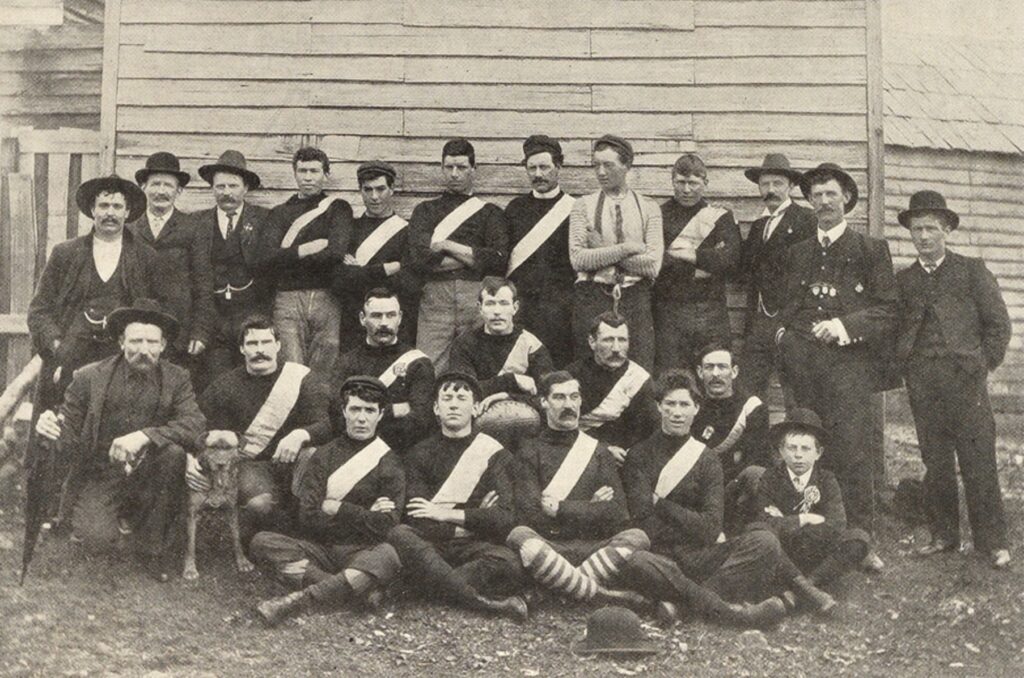
As with any football competition, there was the occasional serious injury. However, one more unusual occurred off the field in 1906 when a Magnet player had a serious accident after the rail trolley conveying players to Waratah for their game left the rails, breaking his leg.
There was no shortage of controversy during the 1907 season. The most serious involved the charge from Central Umpire Les Davis that Mr Ainslie offered him £2 to allow Bischoff to win their match against Magnet. He also claimed that Mr Rowe, a Pioneer delegate, told him before the game against Magnet that the umpire would be thrown out if Pioneer did not win. Following the airing of the allegations, both the Chairman and Secretary of the WDFA resigned.
Both claims were denied at the committee meeting the following week when Davis failed to appear to substantiate his allegations. The new Chairman considered Davis’ actions not to appear and back his claims as reprehensible. The committee were unhappy and moved a motion that Davis circulated reports detrimental to the well-being of the Association.
On another issue, Magnet player O’Keefe accused umpire Ainslie (a Bischoff player) of saying that the Association had asked him to wipe him out. Ainslie defended himself, stating that the Association had asked him to watch O’Keefe and stop rough play. Ainslie was disqualified from playing for six months when another Magnet player corroborated O’Keefe’s story.
In 1907, the clubs agreed to field 18 players, and the WDFA wanted to keep the game as clean as possible and not allow the “district to be a dumping ground for ‘crook’ men”. Magnet won their first premiership easily, and gold medals were presented to all players after the match. However, a local correspondent still described the season as “crook”.
It was around this time that Noel Fooks played for Bischoff, which is unsurprising since his father, the Reverend Henry Samuel Cox Fooks, was a manager at the Mount Bischoff Tin Mining Company. He played second ruckman, rover, half-back and centre forward positions, and was part of the 1908 premiership side. Fooks was also involved in running, cycling, chopping, game shooting and fishing. He wrote in his memoirs that he was only defeated once in six starts over 880 yards.
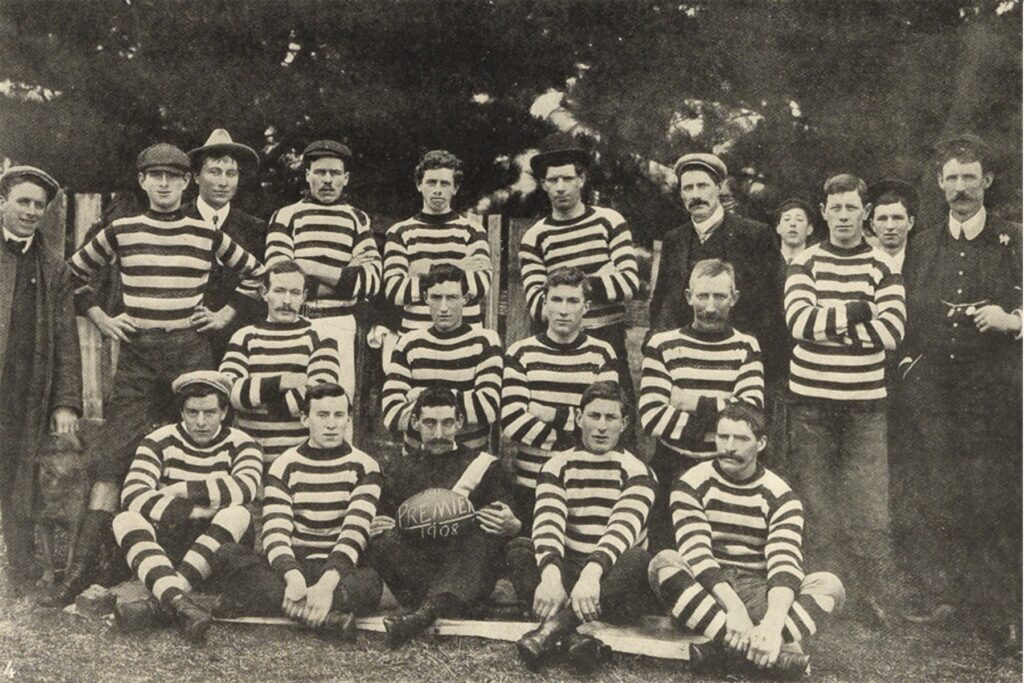
After the 1908 season, Rovers and Wanderers replaced Pioneer and Magnet football clubs. The former won the premiership in their first three years from 1909-11. The premiership decider was against Bischoff and played in pouring rain, with Bischoff six men short and Rovers two short. None tried harder for Bischoff than their veteran player, Tommy Atkins.
It was a strange end to the 1911 season when there was a dispute about which team won between Rovers and Union. One goal umpire had the Union team winners by three points, and the other had the Rovers victors by a point. The Association ordered a play-off, which Rovers won decisively. It meant Rovers and Union had to play again for the premiership, which Rovers won.
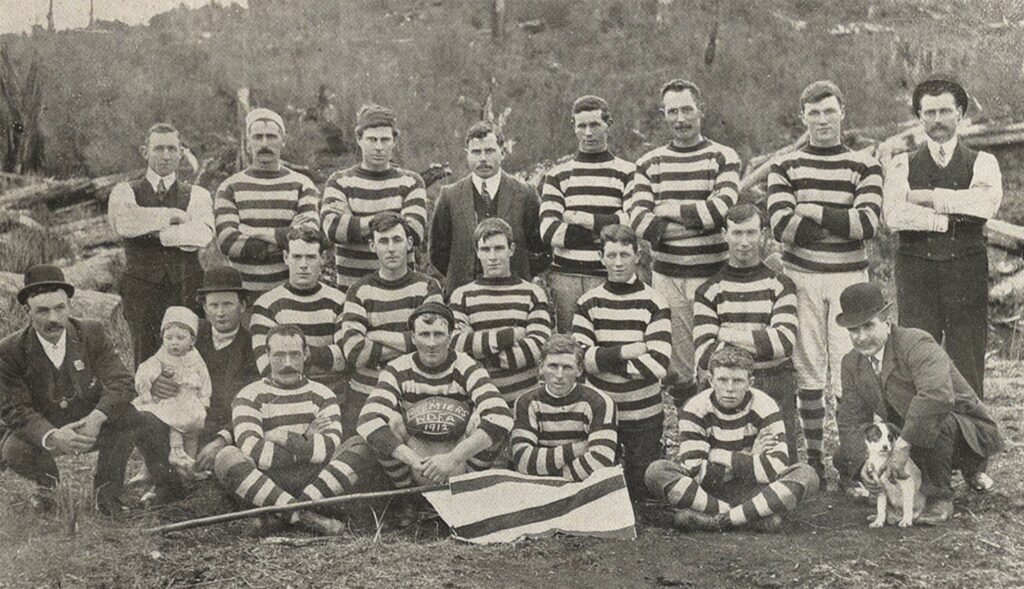
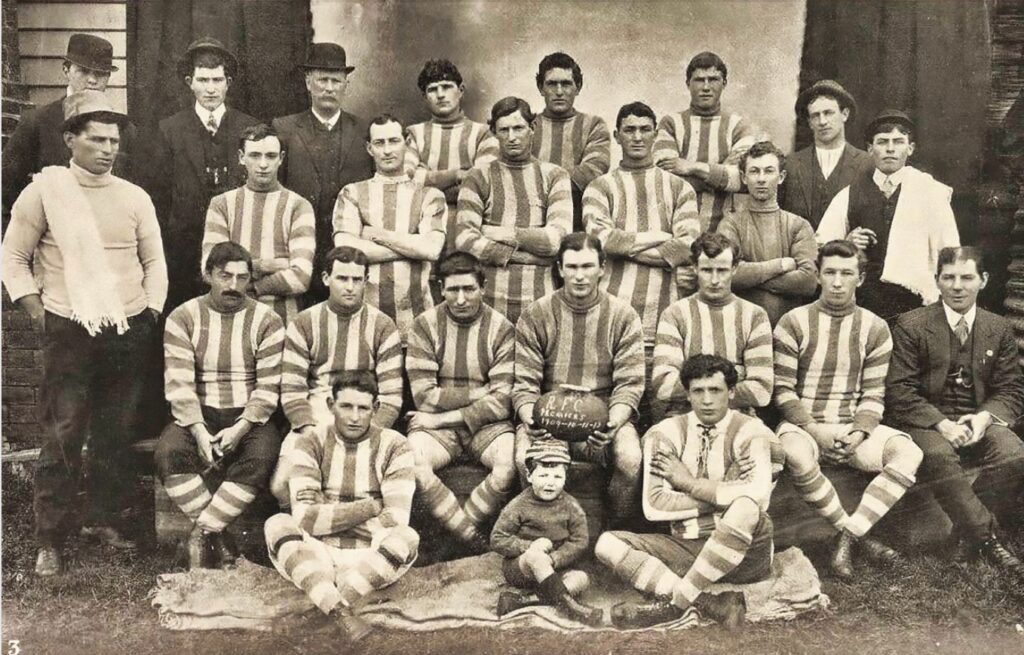
The WDFA went into abeyance during World War I and beyond. In February 1920, a meeting was held to re-form the Waratah branch of the Tasmanian Football Association and Henry Illingworth was elected President. The three teams were Rovers, Waratah and Bischoff.
Magnet couldn’t field a team for several reasons. After the war, the flu pandemic affected the town, incapacitating the workers, even though no one had died. At no period during 1920 was the mine fully staffed. The Commonwealth didn’t lift the embargo on exporting base metal ores until March 1920. However, shipping costs to Europe were too high, and the smelter in Newcastle was still closed, so production was suspended for twelve months, meaning no work and, thus, no footballers.
Waratah won the first game of the 1920 season against Rovers, kicking the winning goal in the last minute of play. Rovers Captain Snowy Heald superbly led his team, who were the premiers after winning five of their seven games.
In 1921, each team struggled to run on the field with a full complement of players. They had to draw players from the osmiridium fields, which strained their limited financial resources. Bischoff captain Ray Whyman brought in players for free. Waratah and Bischoff finished the roster on 18 points and played their grand final in glorious sunshine. Waratah won by ten points, and the team unfurled their huge blue and gold club flag. They then marched into town to receive vocal cheers from the township.
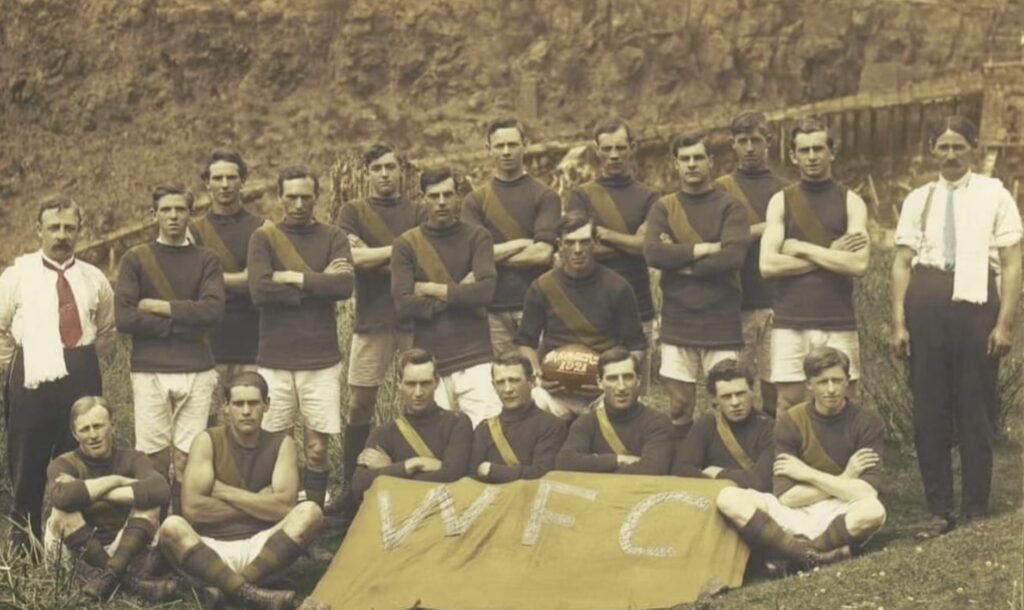
During the 1920s, the WDFA was in a strong position reporting a good financial position most years. In 1924, the competition was very close between the three teams. So close, there was considerable discussion about determining the minor premiers. Typically, the team leading on matches won and not on points had the right to challenge the team leading at the end of the season on premiership points. Because two teams could end the season with an equal number of wins, the committee ruled there must be a play-off to decide the minor premiership.
There were strong moves to create a football union of all the West Coast associations. A tailor from Launceston, Mr Morgan, was a keen supporter. He even stated his company would provide a cup for a competition among the associations.
The combined WDFA team was held in high regard during the inter-Association competition. They hosted a game against Zeehan at the end of the 1924 season following a curtain-raiser between Tullah and Williamsford.
In 1926, the captain of the combined Queenstown team paid special tribute to his opposing WDFA captain, Mr Larkin, describing him as one of the cleanest players and best sports he had met in sixteen years of football.
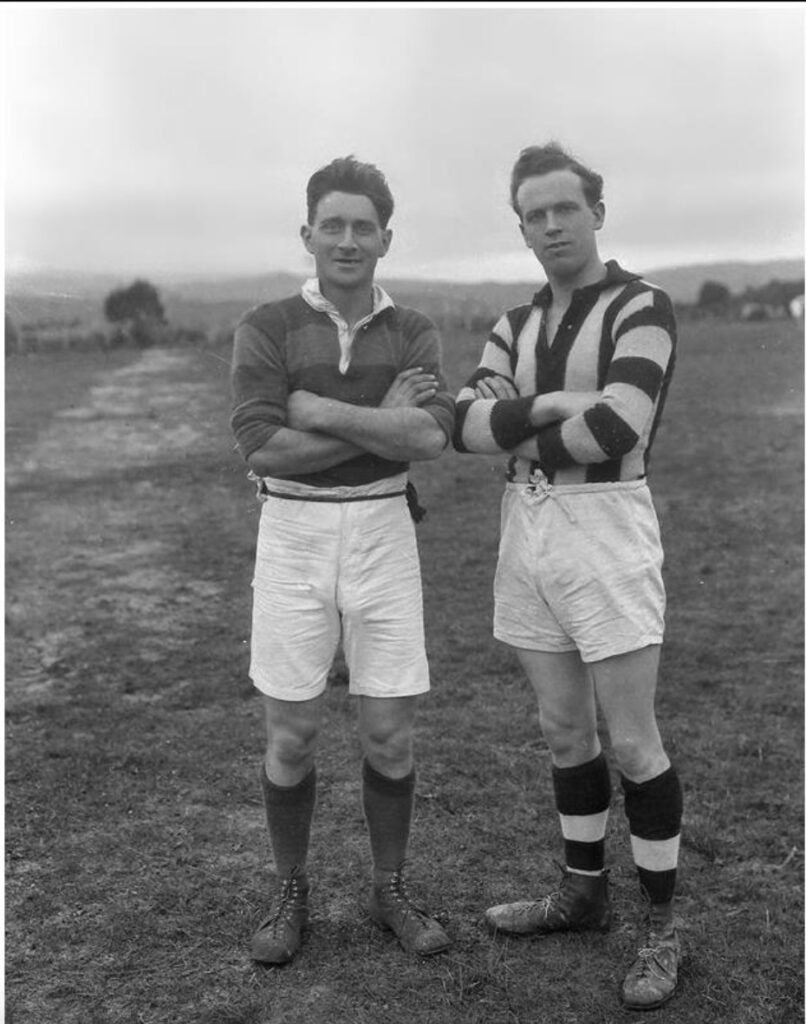
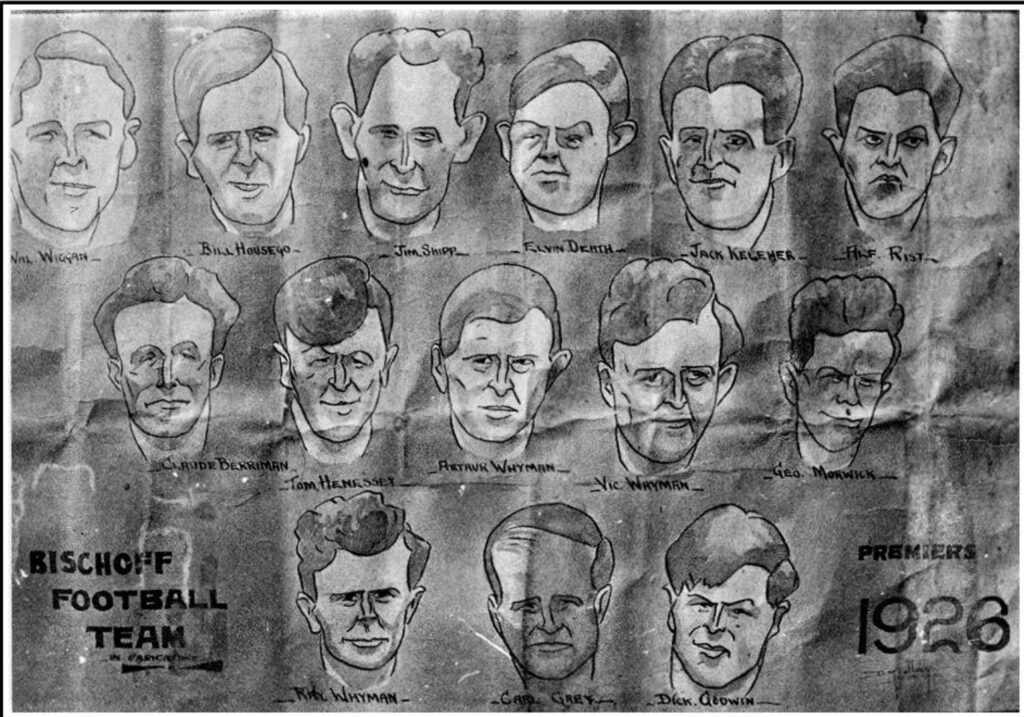
With the Great Depression in full swing, the WDFA was in abeyance in 1930-31. At a meeting in April 1932, around 40 players and supporters discussed the reformation of the Association and its affiliation with the North West Union. Three teams registered – Bischoff, Waratah and Rovers to play games on Saturday afternoons.
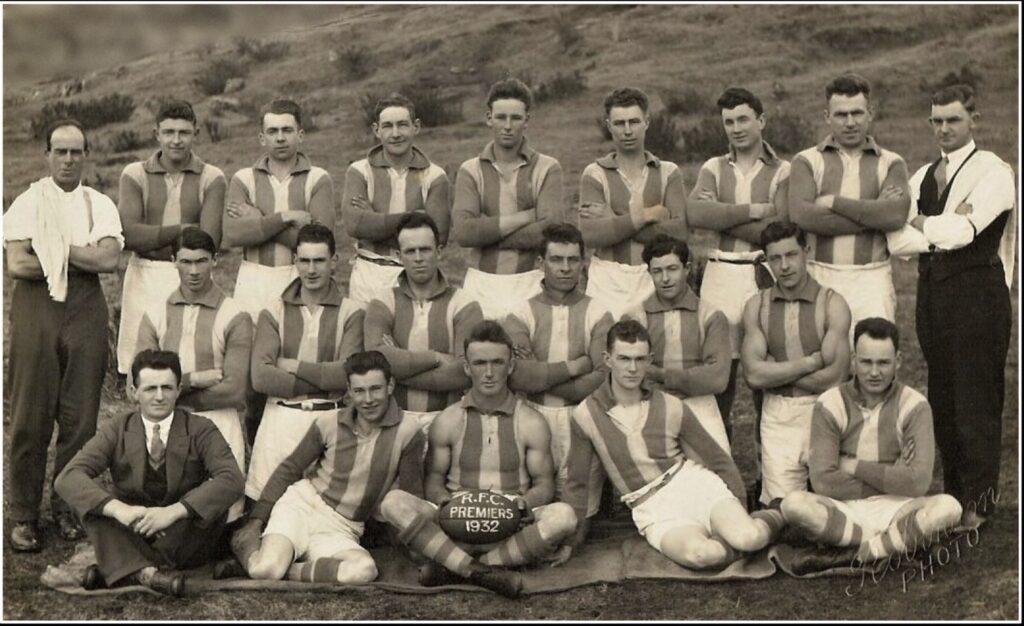
Meanwhile, the Magnet Football Club reformed and was still well supported despite the impacts of the Great Depression on the small mining town. They also keenly sought registration in the WDFA for the 1933 season. Charles Hugo made an impassioned plea at the WDFA meeting, saying Magnet had a:
“…moral as well as light right to be taken into the association, pointing out the association’s declared objective was to promote and improve the game of football in the municipality”.
He argued that a four-team competition would be workable.
However, there was a concern about playing Sunday football to accommodate an extra team when clubs would not be at full strength. Opposers argued that because Magnet had not been able to support a strong enough team in previous boom years, when it had several hundred men to choose from, there were concerns they would struggle to raise a team from 80 men. Their motion was defeated by 27 votes to 10.
The rejection led to a feeling of resentment by the Magnet community at what they believed was the “unsportsmanlike attitude of Waratah footballers in barring the Magnet Club”. The Magnet club was determined to play football. Surprisingly, the local community created a separate Magnet Football Association competition of three teams called City, Miners and Wanderers, and land was made available at the junction of Magnet Creek and the Arthur Rivers for a football ground. During the season, Bischoff played a Magnet Association team and the game was watched with interest due to Magnet’s desire to be included in the WDFA. Due to heavy rain, the umpires unfortunately had to abandon the game after only two quarters.
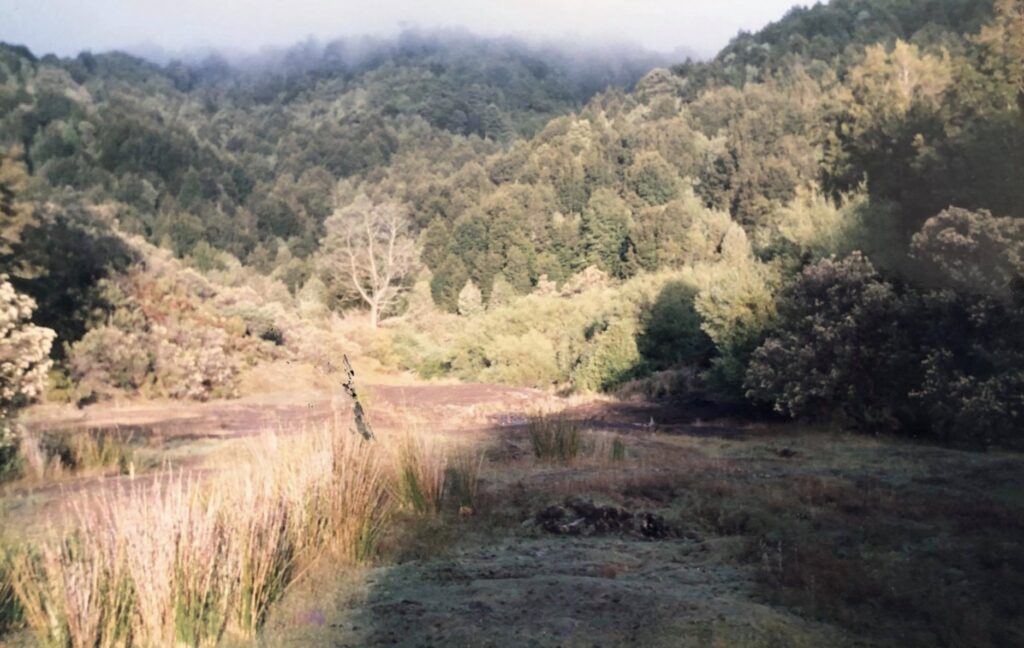
At the end of the season, the three Magnet clubs held a combined ball. A special train ran to Waratah, and the ball was well attended, containing a “preponderance of the fairer sex”. It is not clear whether the Magnet Football Association lasted beyond 1933.
The 1934 WDFA season started with 21 registered players at Rovers, 20 at Waratah and 16 at Bischoff. The Bischoff club were granted use of the association jumpers in case their jumpers did not arrive in time for the first match.
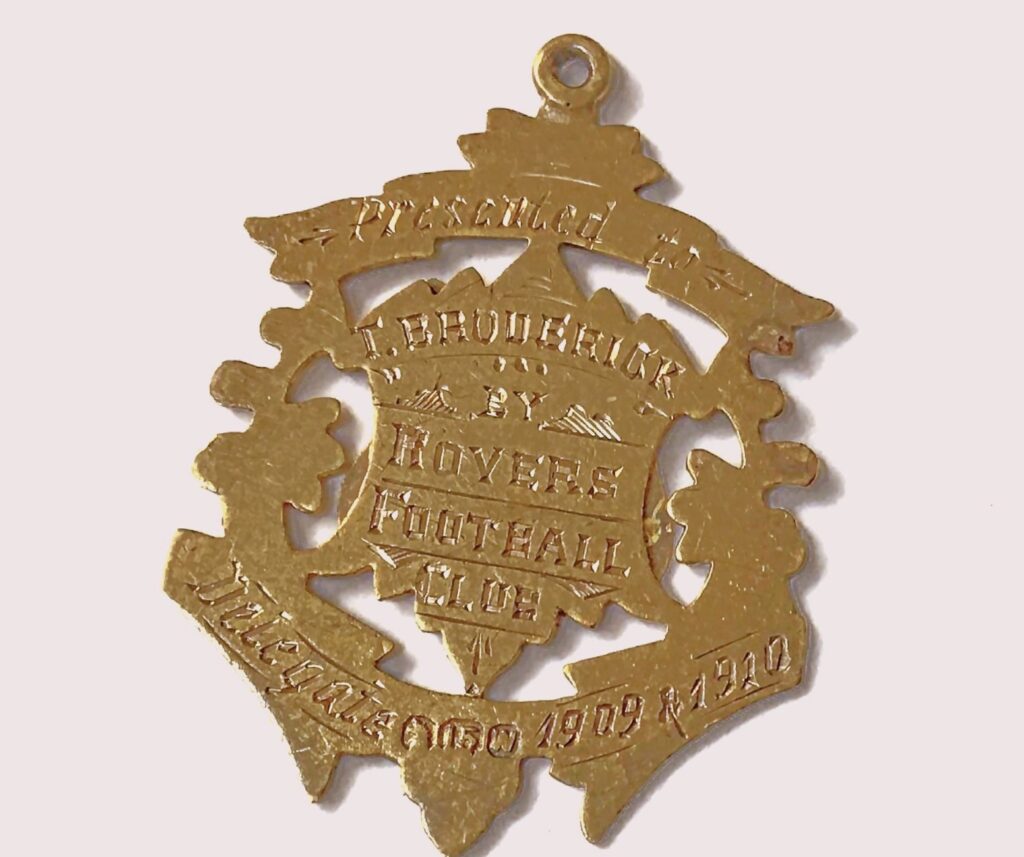
The fortunes of Waratah during towards the end of the Depression were not great. At a meeting of the WDFA in August 1935, a lengthy discussion took place over the unsatisfactory attendance at matches. Weather and sickness were seen as factors, but with the lack of employment opportunities, the remaining public and players had little interest in football. Due to the lack of public support, the committee cancelled the remaining matches and wound up the Association for the season without a premier declared. Many players and supporters agreed at a meeting in November 1936 to wind up the Rovers Football Club because of the lack of competition.
Even though the WDFA was not active, despite efforts to arouse interest in football for the 1936 season, there were still the occasional friendly matches against other north-west and west coast clubs. In August, a team of footballers from Myalla played a friendly match against the local Waratah team.
Later in the month, a team from Roseberry also travelled to Waratah, but bad weather forced the game’s abandonment. It didn’t stop the post-game dance, held in the visitors’ honour, as many supporters and ex-residents of Waratah travelled to Waratah to enjoy the weekend.
In September, a team from Forest travelled to Waratah to play a game against the locals. The footballers played in a “picnic spirit” but displayed good football skills. The locals won by two goals.
A big highlight in 1937 was the visit by the reigning VFL premiers Collingwood as part of their 10-day trip to Tasmania. No game was played, but the Waratah Football Club hosted the visitors and provided a tour of the Mount Bischoff mine.
In 1939, the Waratah Football Association (WFA) was formed mainly due to the persistent work of Waratah policeman Les O’Neill. It was a three-team competition with 14 players per side. The teams were Waratah Miners, City and Wanderers. However, the competition folded after the 1940 season due to the war. Wanderers were the premiers in both years.
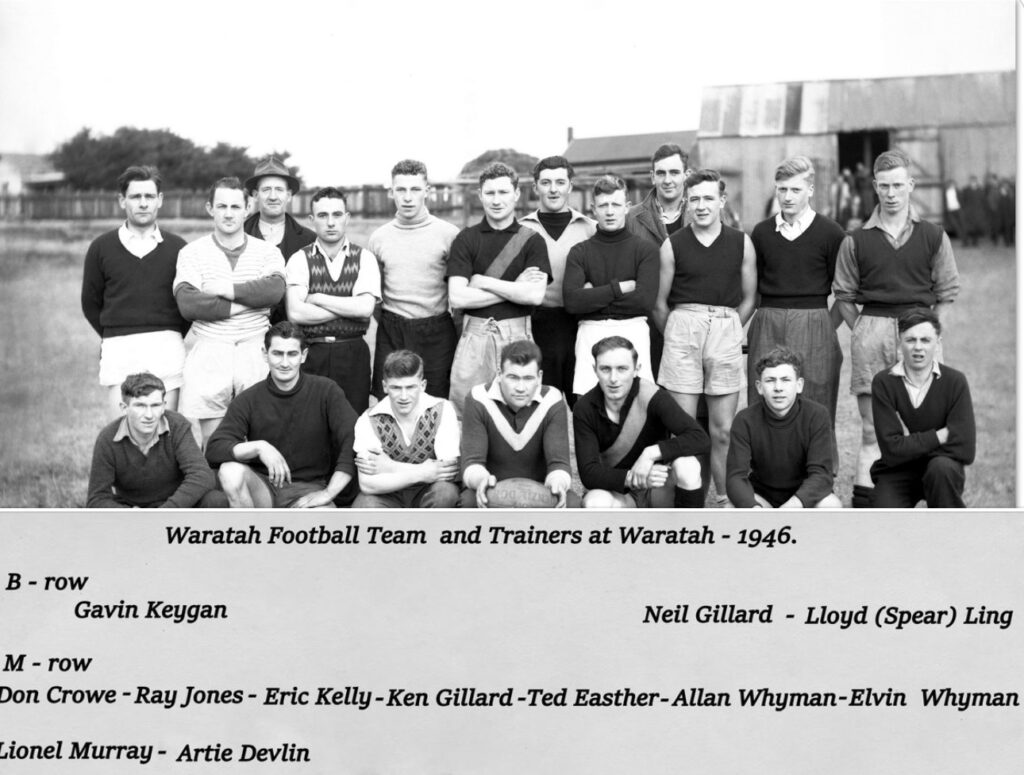
Following the war, in 1947, a decision was made to reform the Waratah District Football Association and affiliate with the North-Western Football Union at a well-attended meeting in Waratah. The Parrawe Rovers, Bischoff, and Waratah football teams submitted applications. They organised a practice match before a distribution of players took place.
Doc Hancock was only two years old when his father, Joe, captain-coached the Parrawe Rovers to premiers in 1948. Joe worked for Waratah identity Joe Fagan as a timber cutter and was a champion footballer. They defeated Bischoff by 32 points for the 1948 premiership, after losing the 1947 decider against Waratah by a solitary point. Joe was awarded the premiership trophy at the end of season ball.
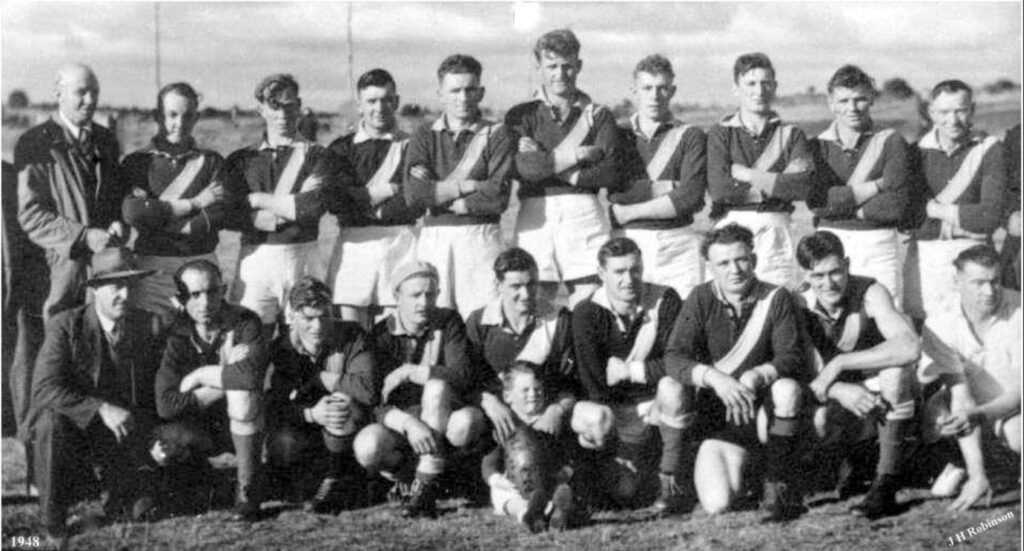
Parrawe were premiers again in 1949 but narrowly lost the grand final in 1950 to Waratah. With scores very close towards the end of the game, Parrawe skipped ahead with a late goal. However, the goal umpire only raised his two fingers, and it was only credited as a behind, and they lost. When Joe heard an irate supporter would take the matter as far as the Privy Council in London after their appeal to the Association was unsuccessful, he responded that they had already won two premierships and would let it go.
There are many great stories from the period after the war. Tactics and half-time speeches were no secret in the small dressing shed separated by a partition. It was also known that players passed a bottle of sherry around at half-time.
John Spinks remembers his father driving the bus on a Sunday morning to pick up the players from Parrawe to take to Waratah. He would start at Liston’s, on top of the gorge, pick up the Mathers, Keygans, Weillys, Walkers and Ec Hills. It would then stop at the sawmills near the Wandle River and pick up the rest of the players.
The players played hard and fair and enjoyed an ale after the game where they were dropped off at the pub and, around 7 pm, rounded up for the drive back to Parrawe. One night, after the usual pit stop on the way home, they lost a player and couldn’t find him. Everyone was anxious until they found him asleep on the bus’s roof!
Albert “Teena” Bester was the captain-coach of Waratah. He retired at 26 and moved to Burnie to work at the “pulp”. When Teena had an opportunity to play one more game when the Pulp team played Waratah, his wife told him not to play. He went anyway and had to confess to her two days later that she was right – he had to go to hospital after the game for two broken ribs.
Doc Hancock recalls when the Queenstown Miners arrived to play Bischoff. They had Black and White jumpers, and when they ran out of jumpers, someone came out onto the ground with two tins of paint – one black and one white – to paint the stripes on borrowed jumpers.
The WDFA folded after the 1953 season, possibly because the NWFA established a reserves competition, diluting the player pool for the WDFA.
During its history, there have been many good footballers in the league. One of the most celebrated was Bill Berryman, who started his career playing for Waratah. He also played for Yeoman, Devonport and 47 games for South Melbourne in the VFL from 1926-28. Standing only 173 cm, he was considered an outstanding defender from 1919 until 1935 and was inducted into the Tasmanian AFL Hall of Fame.
Another good footballer was centreman Norm Walker, who played for Parrawe and represented Tasmania at the 1949 All-Australian Football Carnival in Adelaide, aged only 14. He played one VFL game with Richmond in 1957, finishing his career playing over 200 games for Irishtown in the Circular Head Association.
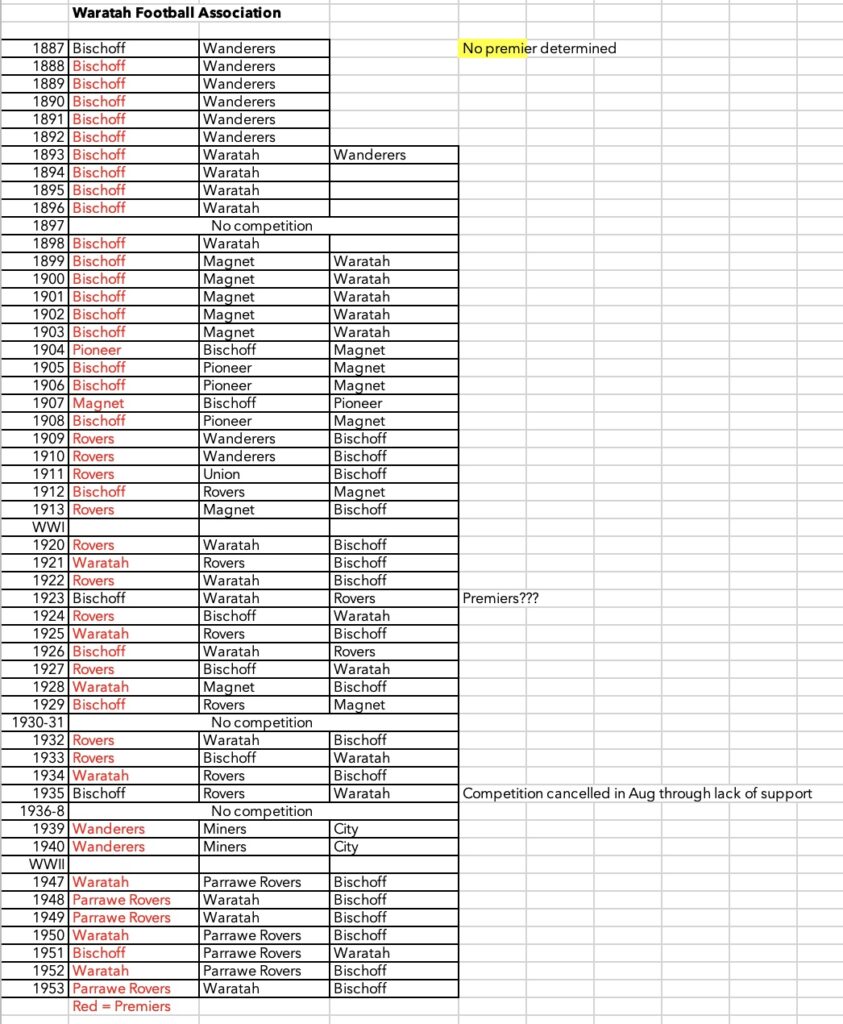
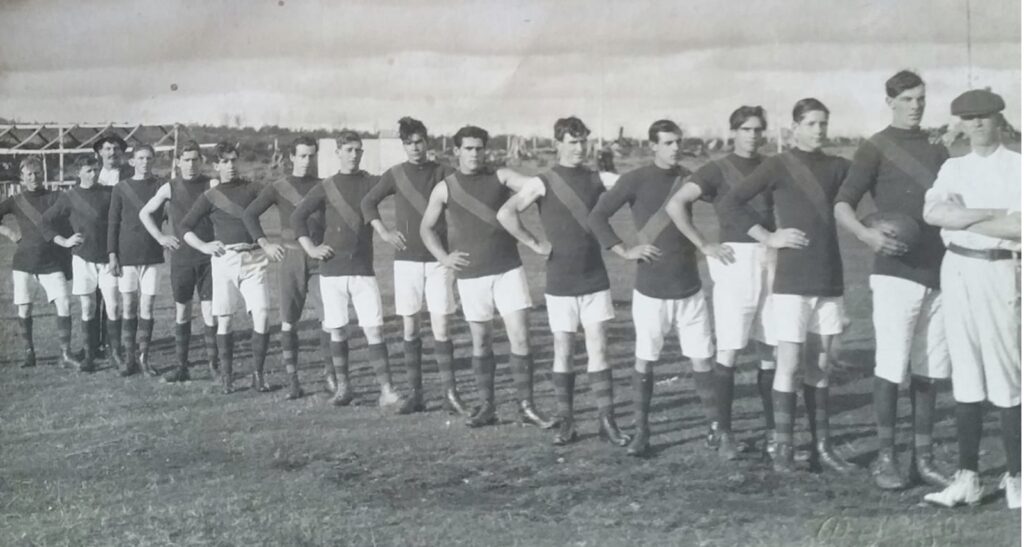
Excellent article. I am trying to find out a bit of history on the Hampshire football team. As they had a oval at Hampshire. Also any history of footy teams from Highclere and West Ridgely.
Another great story Robert. Always interested in the history of Waratah and Parrawe as we have connections with the Keygan and Hills families who lived there over the years.
Diane Walsh
I am the son of Thomas James Bell and Eileen May Bell (Stevenson). I am interested in any stories and information.
Regards Royce.
My grandfather was Henry Richard David Cooper. He was born in Waratah in 1897, lived in the area and played football as a young man. He was a member of the Rovers Football Club and was in the premiership side in 1920.
I have a photograph of that team posing as the premiers. The photo is actually a postcard and starting to fray a bit, but I’ve had a copy made. I’m happy to send a copy to you and also to any football club, museum etc that may be interested in that part of Waratah’s history.
If anyone has that pic, my grandad was the big bloke in the back row in the middle of the pic. He towered over the rest of the team and was their minder! If anyone picked on his smaller teammates my grandad would sort them out very quickly!!